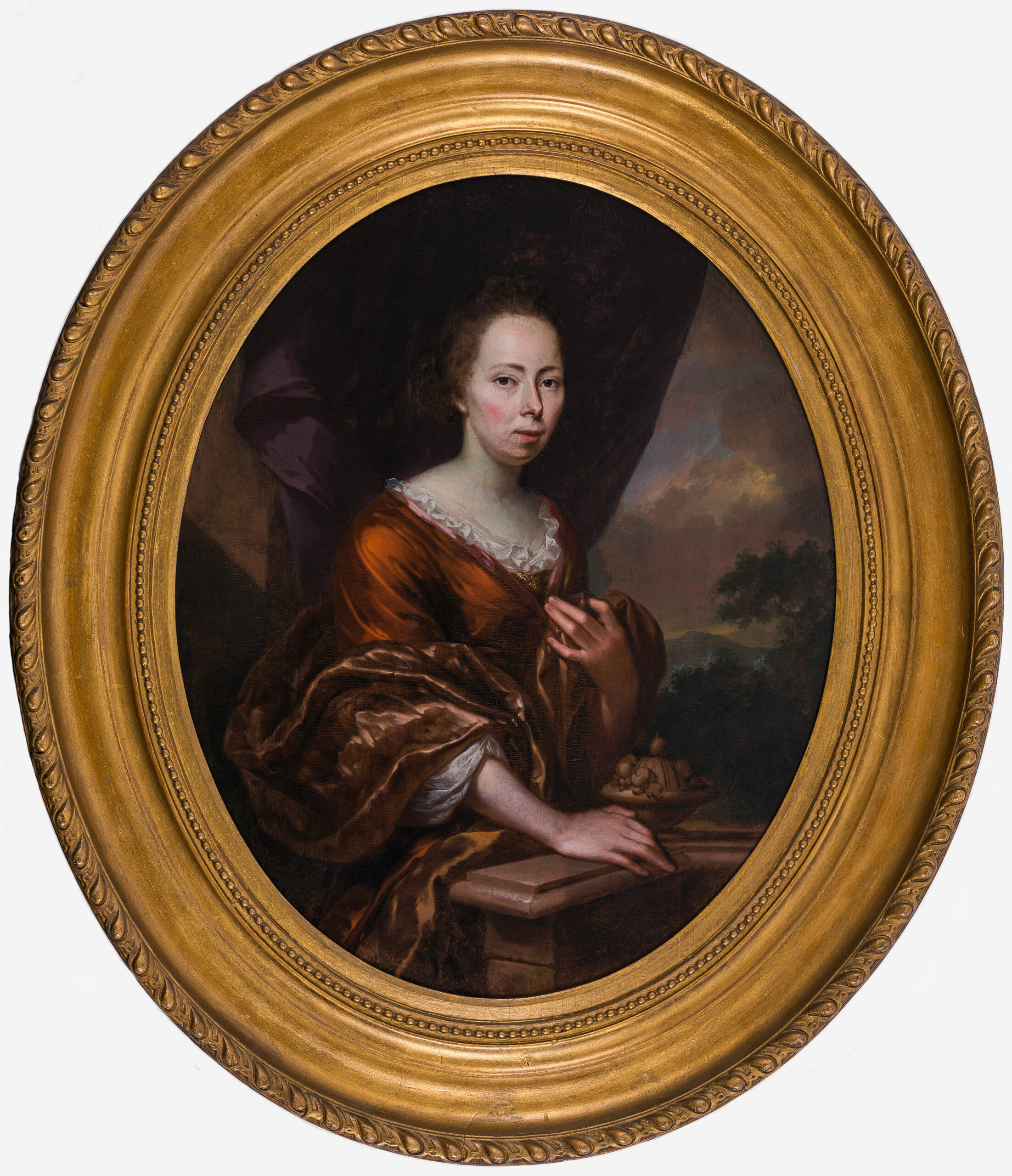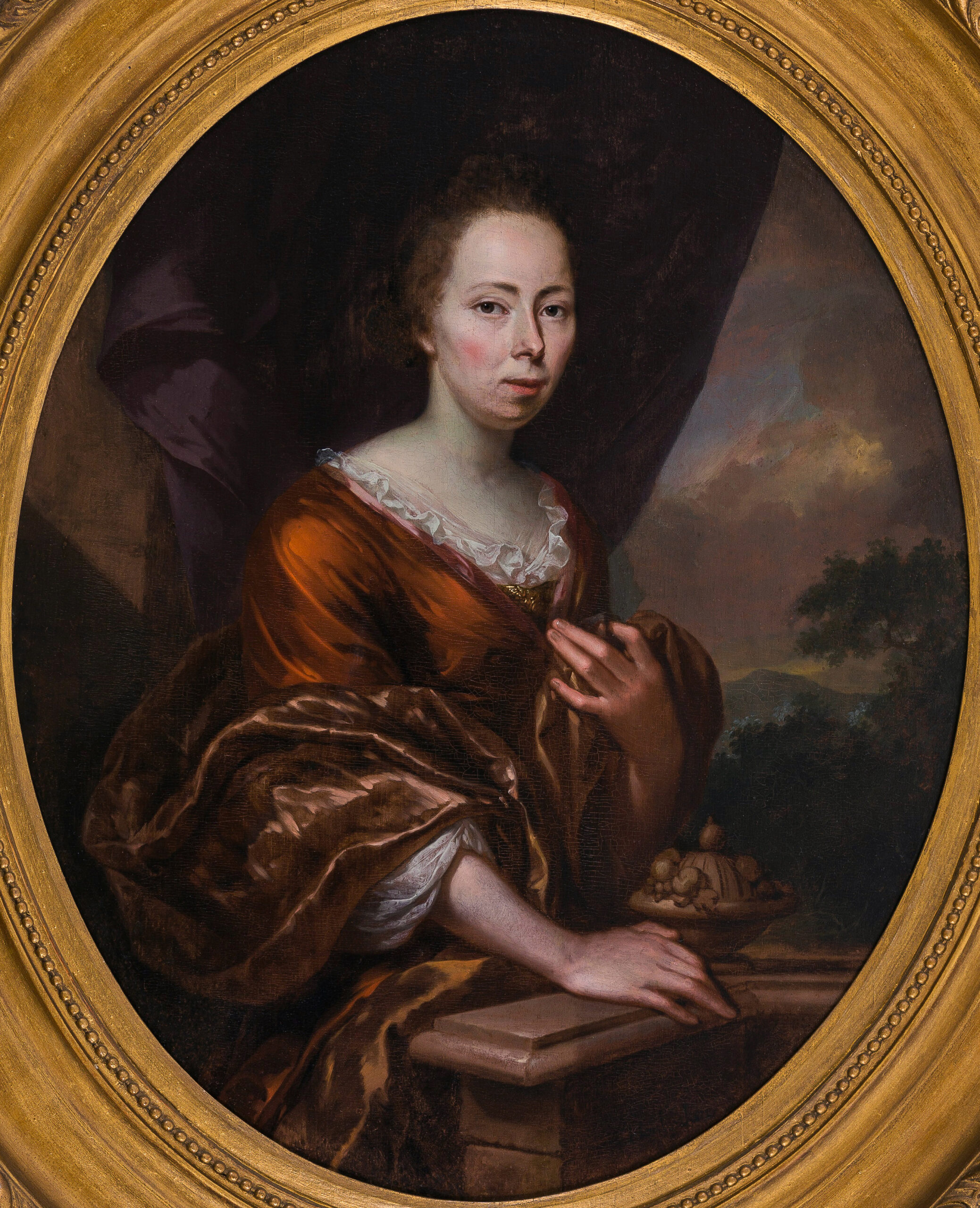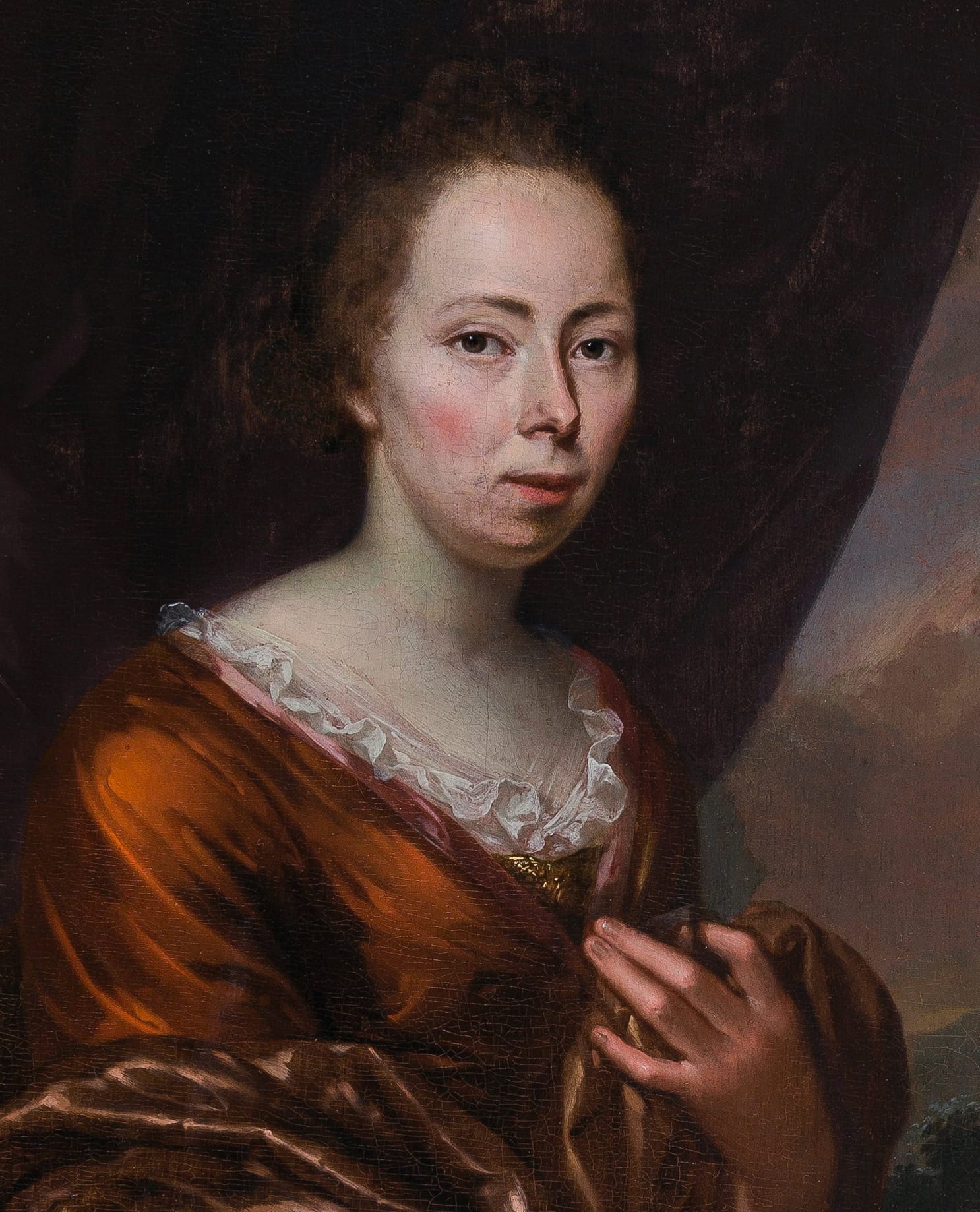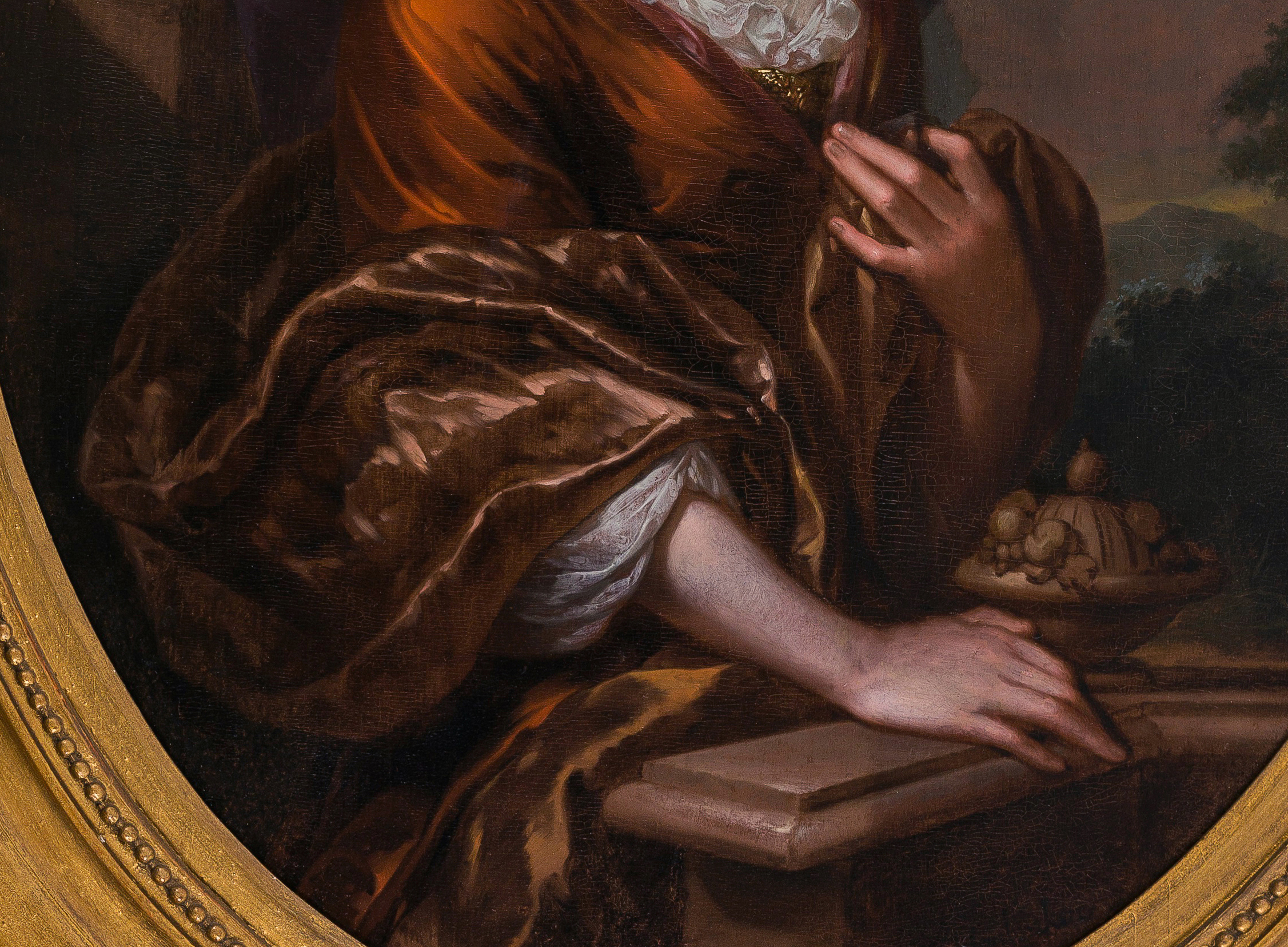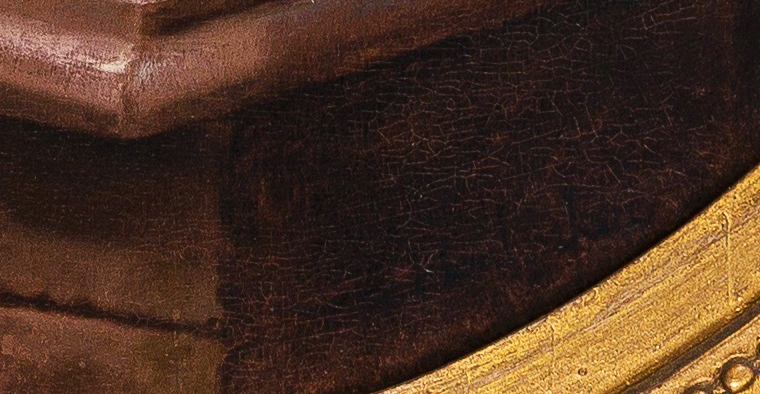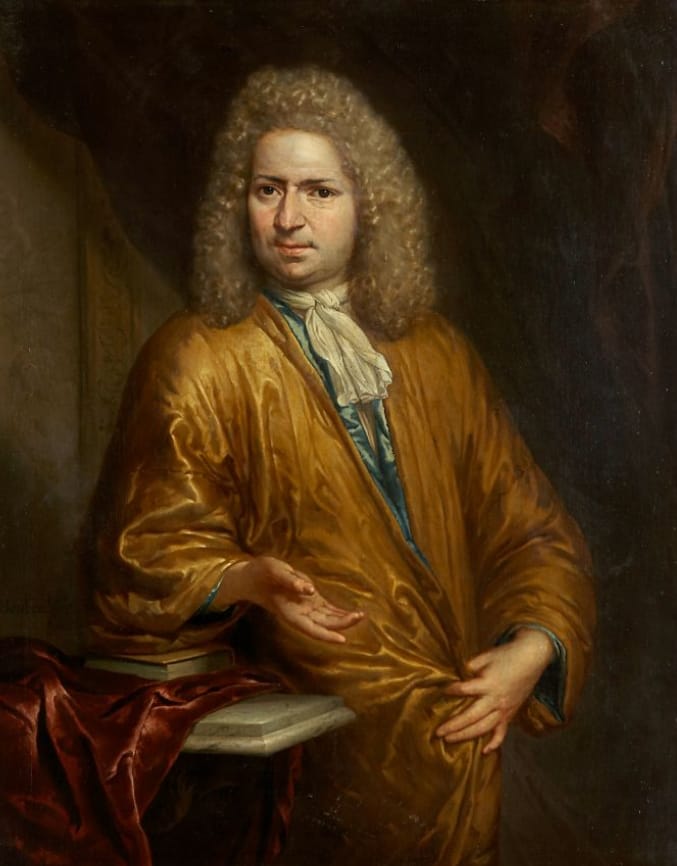ARNOLD HOUBRAKEN (Dordrecht 1660 – 1719 Amsterdam)
Arnold Houbraken (Dordrecht 1660 – 1719 Amsterdam)
Portrait of a Lady
Oil on panel, oval, 42.9 x 34.3 cm (16.9 x 13.5 inch)
Signed ‘A. Houbraken.’ (lower right)
Provenance
Private collection, Belgium
***
Arnold Houbraken was born in Dordrecht on 28 March 1660 as son of the tailor Jan Jansz Houbraken and Truycken Gudde. He married Sara Souborg in 1685, with whom he had ten children; his daughter Anonina married the goldsmith Jacob Stellingwerf and his daughter Christina married the painter Anthoni Elliger.
Houbraken was taught the art of painting by Jacobus Levecq and Samuel van Hoogstraten.1 In 1680 Houbraken travelled to England, and then settled as an independent artist in his native Dordrecht, where he lived in a house named Maastricht on the Varkenmarkt. Around 1709 he and his family moved to Amsterdam, where he had found a wealthy Maecenas, Jonas Witsen. In 1713 he travelled to London again, where he visited the house of Philip Wharton, where he saw 32 portraits by Van Dyck.
Although in Dordrecht he had mostly painted portraits, in the cultural climate of Amsterdam Houbraken was able to concentrate on mythological subjects, painted in a refined academic manner, which were highly esteemed during the period and the ultimate test of a painter’s ability. Houbraken is best known today for his Groote Schouburgh der Nederlantsche konstschilders en schilderessen, which appeared in print between 1718 and 1721 – it remains the most important source of biographies of artists of the Dutch Golden Age.2
The present portrait is very well preserved and is likely to have been painted around 1700-1705, when Houbraken was still working in Dordrecht. The identity of the sitter has sadly been lost in the mists of time, but she must have belonged to Dordrecht's elite. Depicted before an elegant Mediterranean landscape, her delicate facial features are emphasised by being set against a background of a curtain in exuberant purple. Her elegant and masterly painted hands hold a rich scarf, billowing in the wind - a fantasy garment to add a touch of whimsy and movement in portraits, frequently employed by painters. The painting can be compared to Houbraken’s portrait of Rudolf van Loen in the Städel Museum in Frankfurt (fig.).3
1. For the artist, see: B. Cornelis, ‘A reassessment of Arnold Houbraken's Groote Schouwburgh’, Simiolus 23 (1995), p. 163-180.
2. See B. Cornelis, ‘Arnold Houbraken's Groote Schouburgh and the canon of 17th -century Dutch painting’, Simiolus 26 (1998), p. 144-161
3. Oil on panel, 42.7 x 33.8 cm, inv. no. 1122; Jochen Sander and Bodo Brinkmann, Niederländische Gemälde vor 1800 im Städel, Frankfurt am Main 1995, p. 36, fig. 51.
